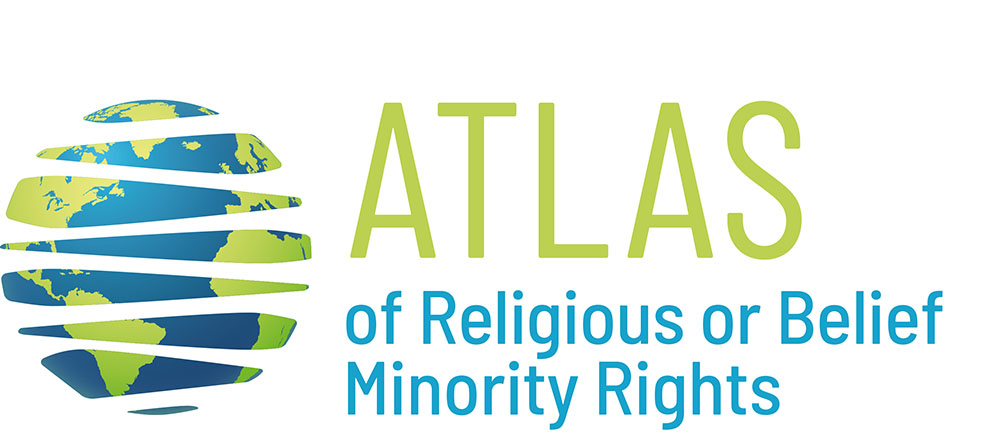HISTORICAL BACKGROUND
The religious situation in Finland, even today, is strongly influenced by the historical legacy – on the one hand the significance of Lutheranism in the history of Finland since 1527, and on the other hand the influence of the state church in the Scandinavian tradition more generally – and the religious distribution of the population. Since almost the whole population of Finland once belonged to the Lutheran Church, and the Orthodox Church had a stronghold in Ladoga Karelia, Olonets Karelia, and Russian Karelia, Syväri, and Petsamo, these two churches have gained a special position in relation to the State through the course of history.
Finland’s centuries-long state connection with Sweden was severed in 1809, and Finland was incorporated into the Russian Empire as an autonomous Grand Duchy. Paradoxically, the Period of Autonomy created the basis for independence for the Church. While the Lutheran Church emphasised the Western ecclesiastical tradition in its Nordic form alongside the different church of the Orthodox Emperor (Czar), holding that it was the representative of Western Christianity in Finland, it was successful in ensuring for itself a new, legally guaranteed status of non-interference. Before the increasing integration of the European Union – including also the time of the independence of Finland prior to joining the EU (1917-1995) – there was indeed no perceived need to open the special preserve enjoyed by the Evangelical Lutheran Church of Finland and the Orthodox Church of Finland, with their associated co-operation with the state, to outsiders in any significant way.
Since Finland joined the European Union (in 1995), the issue of state-church relations became a matter of interest in Finland in a new way. The deepening integration of the European Union, the associated intergovernmental co-operation, and the development of legislation raised questions concerning the importance of freedom of religion and the position of the churches and religious bodies in the Finland of the future.
In the religiously uniform Scandinavia and Finland of the past there was no urgent need to re-evaluate church-state relations. In the Nordic countries, political and social development has taken place without abrupt crises in the position of the churches. A fixed state church system has gradually disintegrated in most Nordic countries. In comparison with Norway and Sweden, Finland can be regarded as a good example of a country where traditional church-state relations have been dismantled in stages without complete separation between church and state.
The Evangelical Lutheran Church of Finland today is clearly a separate institution from the state, with its own legal status. Nevertheless, in Finland there has been constant debate as to whether and in what sense the Lutheran Church is a “state church”. The Lutheran Church has certain links with the state, and in Finland has retained certain features of the state church. The special position of a state church is clearly shown by certain features of ecclesiastical legislation, such as the legal status of the church; until 1995, the state’s obligation to maintain the diocesan chapters; until 2000, the President’s right to nominate bishops; many economic ties to the government, the right to levy a church tax, the employment of chaplains (army, prison, and for the blind and deaf), etc. In the true sense of the word the Evangelical Lutheran Church of Finland has not, however, been a state church since the Church Law of 1869 (by F.L. Schauman) and the Constitution of 1919, when denominational neutrality of the State and the freedom of religion were enshrined in the Constitution Act. The Finnish State is neutral in matters of religion, and the Evangelical Lutheran Church is legally and administratively independent of the state.
Only as recently as the 1990s did the human rights documents of the Council of Europe (CE) and the Organisation for Security and Cooperation in Europe (CSCE, now OSCE) and European integration genuinely force the Nordic churches to evaluate church-state relations on the basis of the principle of freedom of religion, albeit from a quite new perspective.
On the one hand, in the 1990s church-state relations were evaluated in human rights documents primarily from the point of view of the religious freedom of the individual. Does the close relationship between the Lutheran Church and the state infringe the religious freedom of the individual – or to what extent does the privileged position of one or two churches in a country encroach upon the rights and freedom of other religious bodies?
On the other hand, the whole discussion of church-state relations has altered in nature. The old-fashioned idea of “freedom from religion” and an ideological antithesis between church and state is losing ground. Similarly, the antithesis between Christian values and the values of society is also losing ground. They have been replaced by a positive interpretation of freedom of religion that has been in high profile in international documents on the subject of freedom of religion since the Second World War. Citizens have the right to religion and its communal practice and not only the right to be detached from anything to do with religion.
Relations between the state and the Evangelical Lutheran Church of Finland went through a degree of change during the years from 1993 to 2000. In the field of politics as well as in the Church, there is now greater independence of the Church on the one hand and the State on the other. For this reason, in 1993 Lutheran Church law was divided into two parts: a Church Code passed by the State regulates the relations between Church and State, while a Church Ordinance passed by the Church regulates the Church itself – its doctrines as well as its life. The latest stage in the Finnish Church Code work created two appointed committees: the Church Act 2010 Committee (2005) and the Codification of Church Law Committee (2007).
The new Constitution of Finland was passed in 1999 (731/1999) and came into force on 1 March 2000. In this Constitution, the freedom of the individual has been emphasised. Because of this, the Law on Religious Freedom (1922) has been updated. A new Religious Freedom Act was passed in 2003. This Act deals with various issues relating to state and church. The new Law will make all Christian churches and other religious communities more equal in society. Also the dominant status of the Evangelical Lutheran Church of Finland has decreased.
Matti Kotiranta
Kotiranta, M. (2019). State and Church in Finland. In G. Robbers (Ed.), State and Church in the European Union. Baden-Baden: Nomos, pp. 615-618.
RELIGIOUS AND BELIEF MINORITIES IN FINLAND
Non-religious and philosophical communities are not considered as religious minorities and therefore are regulated through the rules (Acts) governing associations, although they also enjoy full fundamental rights and equal treatment within the Constitution.
Most of the world religions that have found their way to continental Europe also have followers in Finland, but only in very small numbers. Followers of Islam are the largest non-Christian movement in Finland, where Islam is both an old minority (the Tartar community was established in 1925) and a new minority. The number of Muslims increased tenfold in Finland in 1990–2011, and it is currently estimated that they now number between 65,000–70,000. However, recording a precise number is difficult, because few Muslims have organized themselves into registered religious groups. With respect to other recently established religious minorities, in 2018 there were twelve registered Buddhist communities, with 1,771 members, and four registered Hindu communities with 368 members.
In the Finnish system, equal treatment finds its critical point in the case of collective religious freedom: as indicated above, the two national churches, the Lutheran and the Orthodox, have through the course of history gained a special position and different status under public law compared to all other religious communities. From a minority perspective, however, this may be problematic. The preferential status of the major churches and “majority hegemonies” on Finnish law and legal interpretation may negatively affect the status of other religious communities and also the lives of non-believers or free thinkers. It may, therefore, happen that issues of presumed discrimination are often placed in the framework of the relations between majority and minorities (as opposed to the framework of the management of religious diversity) rather than focusing on the real protection of religious minorities.
Matti Kotiranta
RESOURCES

Data and information concerning religious demography are provided by Todd M. Johnson and Brian J. Grim, eds., World Religion Database (Leiden/Boston: Brill) and Official Statistics of Finland (OSF): Population structure. ISSN = 1797-5379. Annual Review 2015, Appendix Table 6. Population by religious community 2000–2015. Helsinki: Statistics Finland (Accessed: 11 Sept. 2021). Available at: http://www.stat.fi.
General information on minority issues (including some references to religious or belief ones) can be found at the page devoted to Finland in Minority Rights Group International, World Directory of Minorities and Indigenous Peoples.
The text of the main legislative acts concerning freedom of religion or belief can be found at https://legislationline.org/.
Information about the legal status of the main religious denominations is available at https://okm.fi/en/religious-affairs.
A report on the Finnish legal system and government policies about freedom of religion (with some references to religious or belief minorities) is provided in Department Reports and Publications - United States Department of State.
Sociological and legal analysis concerning religion in Finland are available at https://eurel.info.
For an analysis of the State-religion legal system see
Matti Kotiranta, Religion and Law in Finland, Alphen aan den Rijn, Wolters Kluwer, 2021.
The legal and social condition of religious minorities in Finland is discussed by Matti Kotiranta, The Specific Role and Equal Rights of Religious Minorities in Finland, in: Marco Ventura (ed.), The legal status of old and new religious minorities in the European Union, Granada, Comares, 2021.
INTERACTIVE INFOGRAPHICS
0 respect of international standards
-1 restrictions of rights
0 equal treatment of RBMs
-1 high gap between religious majority and minorities

 MENU
MENU CLOSE
CLOSE


